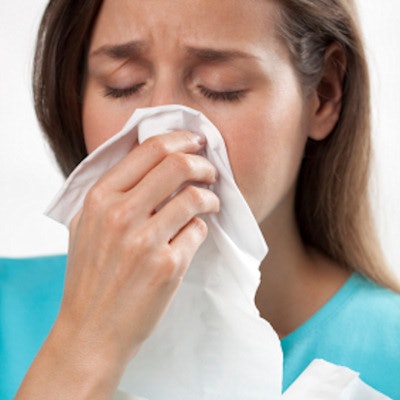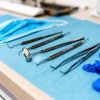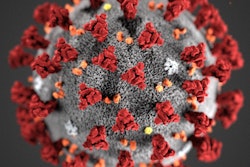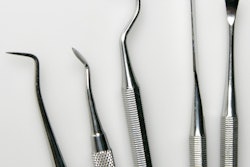
The latest influenza virus update the U.S. Centers for Disease Control and Prevention (CDC) stated that the worst of the 2017-2018 flu season may be behind us, but the flu continues to affect people across the U.S. Facilities with high-traffic areas, such as busy patient waiting rooms in dental offices, must be vigilant about preventing the spread of this highly contagious virus. It is a crucial time for dental practices to tighten up their cleaning and disinfecting protocols.
The flu season should also serve as a reminder that infection-prevention protocols are important not just during the winter months, but year-round. These protocols help protect patients, staff, and other visitors from a range of threats from bloodborne pathogens such as viral hepatitis to multidrug-resistant organisms such as methicillin-resistant Staphylococcus aureus (MRSA) and carbapenem-resistant Enterobacteriaceae to norovirus and the bacteria and viruses that cause the common cold.
Cross-contamination and illness spread
Cross-contamination can happen quite easily in dental settings. Patients carrying the influenza virus, for instance, can begin unintentionally spreading the virus and putting other patients and staff at risk the moment they enter a dental office. Almost 80% of infectious diseases are spread by touch, providing countless opportunities for cross-contamination between patient care areas and reception areas to patients, staff, and other surfaces, according to the 2006 book The Secret Life of Germs by Philip Tierno Jr., PhD.
Research in dental offices has shown that surfaces inside and outside of the dental operatory can be contaminated with bacteria. In a 2016 study of 11 offices, Escherichia coli was found in 70% of patient chairs and 25% of reception area countertops (Journal of Dental Hygiene, December 2016, Vol. 90:6, pp. 354-361). In a 2007 study, researchers recovered MRSA colonies from light switches, computer keyboards, and dental chair push-buttons in the span of a single day (Infection Control & Hospital Epidemiology, February 2007, Vol. 28:2, pp. 185-190). In fact, research from a 2018 study found that up to 41% of surfaces within a healthcare facility can become contaminated in just four hours (American Journal of Infection Control, January 2018, Vol. 46:1, pp. 39-43).
In addition to encouraging healthy behavior among team members, thorough and routine surface cleaning and disinfection throughout the office are imperative to prevent the spread of illness, especially since harmful viruses and pathogens can survive on hard surfaces for extended periods of time.
Disinfectant selection and usage
During flu season and beyond, dental practices should take the time to select the right disinfectants to combat the flu and other infectious diseases. It is important to select an Environmental Protection Agency-registered disinfectant that can kill a wide range of common healthcare-associated pathogens.
“Even the best products and protocols won't work as intended if they are not implemented correctly”
The disinfectant should have short contact times, facilitating faster room turnover and greater compliance from users. Dental practices should select ready-to-use cleaner disinfectants such as hydrogen peroxide cleaner disinfectant products, which have 30-second to one-minute contact times on most bacteria and viruses, including the influenza virus, and have been shown to effectively reduce bacteria commonly found in dental offices, such as MRSA, according to the 2016 study in the Journal of Dental Hygiene cited earlier.
It is also important to select products that are compatible with surfaces commonly found in dental settings (such as plastics, acrylic, laminate, and stainless steel) to help maintain their longevity. By selecting disinfectants that offer both efficacy and compatibility, dental facilities can maximize product use and prevent surface damage that can increase the likelihood of contamination.
When in doubt, contact the manufacturers directly to determine what type of disinfectant is compatible with various surfaces in their office.
After each patient visit, the CDC recommends cleaning and disinfecting environmental surfaces that are not protected by barriers, which could include anything from door handles to patient chairs. Selecting the right products and taking the time to read disinfectant product labels for kill claims and contact times can help ensure that dental teams are correctly using products that are specifically formulated to eliminate the influenza virus and other commonly found pathogens.
Guideline usage
Practices should always refer to the most up-to-date versions of the CDC's infection prevention and control in dental settings guidelines, as well as the Occupational Safety and Health Administration's bloodborne pathogens standard and the Organization for Safety, Asepsis and Prevention's dental infection control frequently asked questions, for additional information regarding the appropriate selection and use of surface disinfectants.
Even the best products and protocols won't work as intended if they are not implemented correctly, which is why dental facilities should also provide ongoing education training and monitoring to reinforce best practices and ensure compliance.
Sarah Bell-West, PhD, is a scientist with Clorox Healthcare.
The comments and observations expressed herein do not necessarily reflect the opinions of DrBicuspid.com, nor should they be construed as an endorsement or admonishment of any particular idea, vendor, or organization.



















